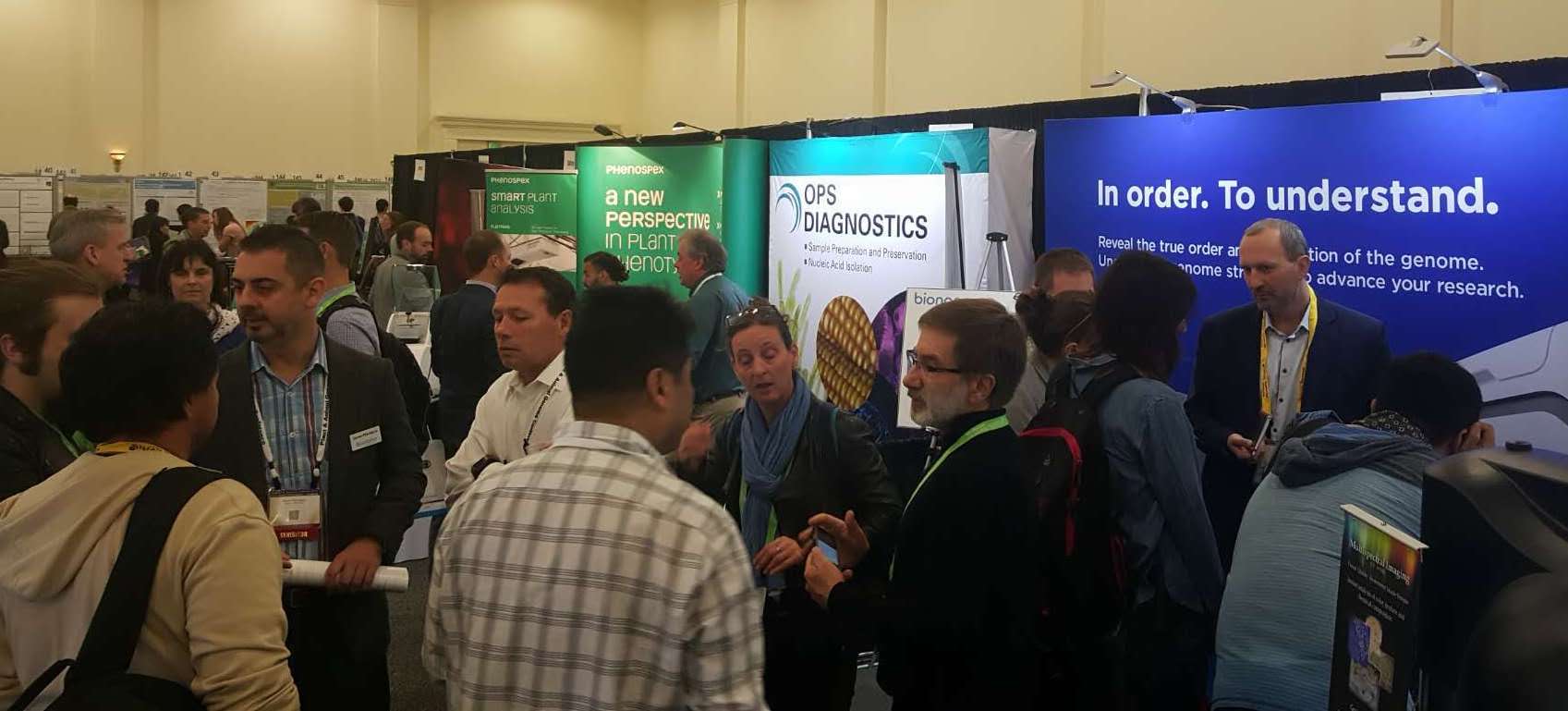Blog
Bionano’s DLS Labeling Chemistry “One of the Most Exciting Things at PAG”
This year’s PAG XXVI started with a bang, as Bionano scientist Yang Zhang opened the meeting for us on Saturday with a talk on early results of the Direct Label and Stain (DLS) chemistry. We stayed until Wednesday, when we presented this data to the Vertebrate Genomes Project/G10K meeting.
We already told you about the 23 posters and 16 workshops that included Bionano data at PAG, which show that Bionano has become an essential tool for those of you working on genome assembly projects. GenomeWeb wrote stories about two such presentations. Sandy, an Australian desert dingo, had her genome assembled with the help of Bionano maps, and her genome will soon be joined by that of a grey wolf and German Shepherd. Our maps should help discover events that took place during canine evolution and domestication. GenomeWeb also reported on the work done in Erich Jarvis’ lab as part of the Vertebrate Genomes Project (VGP). The team tested dozens of sequencing and assembly technologies, and settled on Bionano as one of the core technologies used in phase 1 of the project at Rockefeller University.
But without any doubt, the star of the show was our new DLS chemistry which directly labels specific sequence motifs on DNA and allows for the construction of genome maps spanning entire chromosome arms or even full chromosomes in a single contiguous map. After our press release on DLS, our Bionano User Group Workshop and Yang’s talk, word spread quickly and Bionano’s booth was packed. Some of our DLS early access customers kindly volunteered to attend our “Meet the Experts” hour on Monday to share their enthusiasm for our new method.
“These results are truly amazing”, “DLS is one of the most exciting things at PAG”, “Your new labeling chemistry is revolutionary” are just some of the reactions we heard from early access customers and guests.

